#USAF - Air Force - military - war
Text

#military#aircraft#air force#us air force#usaf#fighter plane#second world war#world war ii#propeller plane#propeller#warbird#aviation history#aviation
1K notes
·
View notes
Text

B-52
505 notes
·
View notes
Text

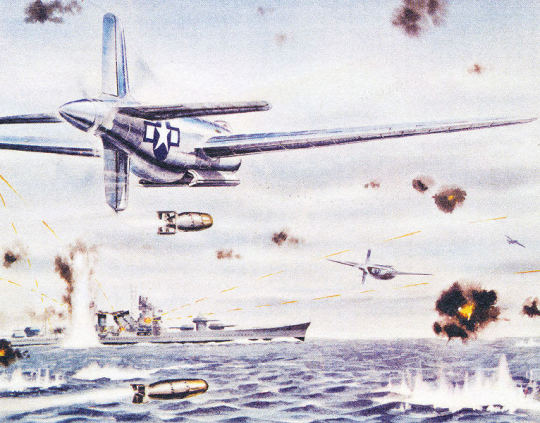
Concept art of the Douglas B-42 Mixmaster in action in the Pacific.
source
#Douglas XB-42 Mixmaster#Douglas XB-42#XB-42 Mixmaster#XB-42#B-42#Mixmaster#Bomber#Cancelled#United States Air Force#U.S. Air Force#US Air Force#USAF#World War II#World War 2#WWII#WW2#WWII History#History#Military History#concept art#1940s#undated#my post
57 notes
·
View notes
Text
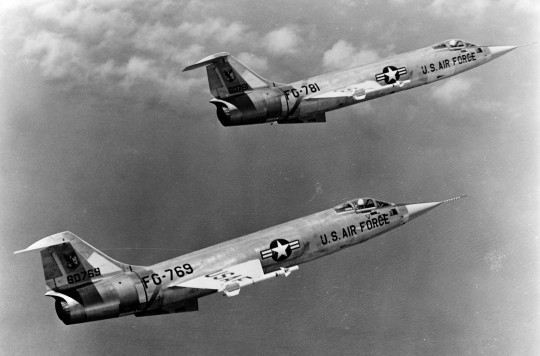
Starfighters circa 1960
#Lockheed#F-104#Starfighter#USAF#F-104A#Military aviation#Fighter aircraft#Fighter Bomber#Cold War#Century Series#Air Force#jet#airplane
92 notes
·
View notes
Text
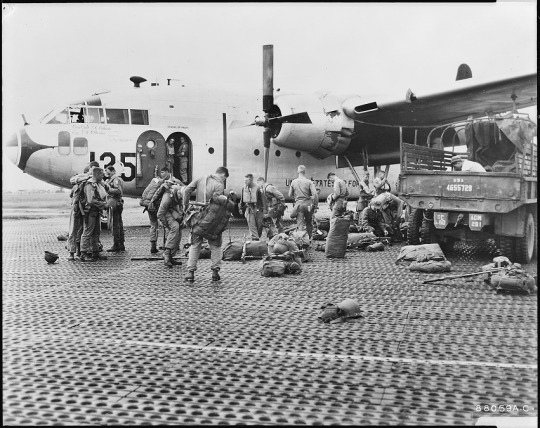
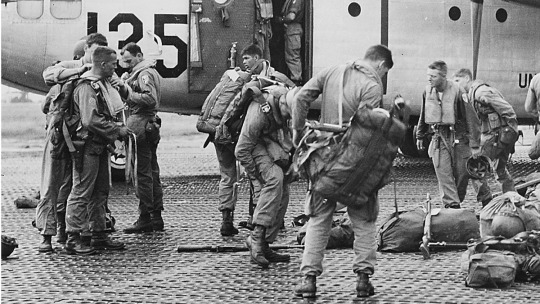
Paratroopers of the 187th Regimental Combat Team put on parachutes and "Mae West" life preservers before boarding a C-119 "Flying Boxcar," en route to Korea from southern Japan, on July 2, 1953.
Record Group 342: Records of U.S. Air Force Commands, Activities, and Organizations
Series: Black and White Photographs of U.S. Air Force and Predecessors' Activities, Facilities, and Personnel, Domestic and Foreign
Image description: 13 men are outdoors, next to a C-119 airplane. They are all in various stages of putting on parachutes, life preservers, and other equipment. Nearby is a truck with an open bed.
Image description: Zoomed-in portion of previous photo, showing the men in more detail. One is helping another fasten his life preserver around his neck; another is buckling a strap around his leg; another is lifting up a packed parachute to sling on his back.
71 notes
·
View notes
Text

World War 2 era United States Army Air Forces’ 40th Bombardment Group matchbook cover.
#vintage illustration#vintage advertising#matchbooks#vintage matchbooks#matchbook covers#u.s. military#walt disney#40th bombardment group#world war 2#ww2 history#wwii#ww2#ww2 art#wwii history#wwii era#united states army air forces#twentieth air force#40th aew#40th air expeditionary wing#usaf#united state air force
26 notes
·
View notes
Text

bomber squadron
105 notes
·
View notes
Text
youtube
#youtube#militarytraining#Bomber Task Force#NATO#War#Spain#USA#United States#Exercise#Aviation#Military#Europe#Air Force#Training#Aircraft#Deployment#Defense#Fighter Jets#USAF#Missions#B-1B Lancers#Bombers.
2 notes
·
View notes
Text
Books of 2023

Book 26 of 2023
Title: The Tiger FACs: A Dance With the Devil
Authors: Don Bell
Tags: A-1 Skyraider, AC-130 Spectre, B-52 Stratofortress, C-123 Provider, CSAR, EC-121 Warning Star, F-100 Super Sabre, F-105 Thunderchief, F-4 Phantom II, FAC, Fast-FAC, H-34 Choctaw, KC-135 Stratotanker, KHM Cambodian Incursion (1970) (Vietnam War), LAO Arrow Head Lake, LAO Ban Ban, LAO Ban Ban Valley, LAO Ban Karai, LAO Ban LaBoy Ford, LAO Barthelemy Pass, LAO Boloven Plateau, LAO Chinese Road, LAO Fishes Mouth Region, LAO Hmong Meo Tribesmen, LAO IDP Interdiction Point, LAO Keo Neua, LAO Khang Khai, LAO Khang Khay, LAO Khang Khay - Chinese Cultural Center, LAO Kingdom of Xieng Khouang, LAO Laos, LAO Laotian Civil War (1959-1975), LAO Lima Site 02 - San Tiau (Laotian Civil War), LAO Lima Site 20A - Long Tieng (Laotian Civil War), LAO Lima Site 32 - Boung Lam (Laotian Civil War), LAO Lima Site 36 - Na Khang (Laotian Civil War), LAO Lima Site 85 - Phu Pha Thi (Laotian Civil War), LAO Luang Prabang, LAO MR Military Region (Laotian Civil War), LAO MR1 (Laotian Civil War), LAO MR2 (Laotian Civil War), LAO MR5 (Laotian Civil War), LAO Muong Soui, LAO Na Khang, LAO Nong Het, LAO Operation About Face / Kou Kiet (1969) (Laotian Civil War), LAO Operation Barrel Roll (1964-1973) (Laotian Civil War) (Vietnam War), LAO Operation Commando Hunt (1968-1972) (Laotian Civil War) (Vietnam War), LAO Operation Rain Dance (1969) (Laotian Civil War), LAO Operation Steel Tiger (1965-1968) (Laotian Civil War) (Vietnam War), LAO Operation Yankee Team (1964) (Laotian Civil War), LAO Pathet Lao, LAO Plain of Jars / Plaine des Jarres, LAO Prime Minister Souvanna Phouma, LAO Prince Souvanna Phouma, LAO RLA General Vang Pao, LAO RLA Royal Laotian Army, LAO RLAF Royal Lao Air Force, LAO Road Runner Lake, LAO Route 13, LAO Route 19, LAO Route 61, LAO Route 7, LAO Route 7/71 Junction, LAO Route 71, LAO Sam Neua, LAO USAF Project 404 (Laotian Civil War), LAO USAF Steve Canyon Program - Ravens FAC (Laotian Civil War), LAO Vientiane, LAO Xieng Khouang, O-1 Bird Dog, O-2 Skymaster, OV-10 Bronco, PHL Philippines, PHL US USAF Clark Air Force Base, POW, RF-4, SA-2 Guideline SAM, SAM, SEAD / Wild Weasel, T-28 Trojan, T-39 Sabreliner, THA RTAF Royal Thai Air Force, THA RTAFB Korat Royal Thai Air Base, THA RTAFB Nakhon Phanom Royal Thai Air Base, THA RTAFB Takhli Royal Thai Air Base, THA RTAFB Ubon Royal Thai Air Base, THA RTAFB Udorn Royal Thai Air Base, THA Thailand, US Ambassador George McMurtrie Godley III, US Ambassador William Sullivan, US Birdair Airlines (Vietnam War) (Laotian Civil War) (Cambodian Civil War), US CIA Central Intelligence Agency, US COA CASI Continental Air Services International, US COA Continental Airlines, US Secretary of Defense Melvin Laird, US Secretary of State Henry Kissinger, US USAF 11th TRS - Atlanta, US USAF 11th TRS - Bullwhip, US USAF 19th TASS - Rustic FAC, US USAF 21st TASS - Rustic FAC, US USAF 23rd TASS - NAIL FAC, US USAF 23rd TASS - OL1 - Rustic FAC (Ubon) (Cambodian Civil War) (Vietnam War), US USAF 25th TFS - Assam Dragons, US USAF 33rd TFW, US USAF 34th TFS - Hatchet, US USAF 355th TFW, US USAF 366th TFS - Stormy FAC, US USAF 388th TFW, US USAF 388th TFW - Seafox (SEAD), US USAF 388th TFW - Tiger Fast-FAC, US USAF 39th Aerospace Rescue and Recovery Sqd - Crown/King, US USAF 40th TFS, US USAF 416th TFS - Det 1 - Misty FAC, US USAF 432nd TRW - Wolf FAC, US USAF 469th TFS, US USAF 553rd TRW - Bat Cat, US USAF 606th Special Operations Sqd - Candlestick, US USAF 6250th Support Squadron - Scatback, US USAF 7th ABCCC Airborne Command and Control Sqd - Alley Cat, US USAF 7th ABCCC Airborne Command and Control Sqd - Cricket, US USAF 7th ABCCC Airborne Command and Control Sqd - Hillsboro, US USAF 7th ABCCC Airborne Command and Control Sqd - Moonbeam, US USAF 7th AF Task Force - Big Eye / College Eye / Ethan / Rivet Top / Disco /, US USAF 8th TFW - Wolf FAC, US USAF Eglin Air Force Base FL, US USAF JEST Jungle Environment Survival Training, US USAF United States Air Force, US USMC Ernest C. Brace, US USMC United States Marine Corps, VNM CIA Air America (1950-1976) (Vietnam War), VNM Da Nang, VNM Dien Bien Phu, VNM DMZ Demilitarized Zone - 17th Parallel (Vietnam War), VNM Dong Hoi, VNM DRV NVA 316th Division, VNM DRV NVA North Vietnamese Army, VNM DRV VM Viet Minh, VNM Ho Chi Minh Trail (Vietnam War), VNM Mu Gia Pass, VNM Operation Arc Light (1965-1973) (Vietnam War), VNM Operation Barrel Roll (1964-1973) (Vietnam War), VNM Operation Combat Skyspot (1965-1973) (Vietnam War), VNM Operation Steel Tiger (1965-1968) (Vietnam War), VNM Operation Yankee Team (1964-1973) (Vietnam War), VNM Route 1, VNM Route Pack I (Vietnam War), VNM RVN ARVN Army of the Republic of Vietnam, VNM RVN SVNAF Da Nang Airbase, VNM RVN SVNAF South Vietnamese Air Force, VNM Song Bong River, VNM Tuy Hoa, VNM USAF Phu Cat Air Base (Vietnam War), VNM Vietnam, VNM Vietnam War (1955-1975)
Rating: ★★★★★ (5 Stars)
Subject: Books.Military.20th-21st Century.Asia.Vietnam War.Aviation.USAF.FAC, Books.Military.20th-21st Century.Asia.Vietnam War.Laotian Civil War.Aviation.FAC.Tiger
Description: They were the Tiger FACs, the forward air controllers who flew fast-moving F-4E Phantoms over the deadly skies of Laos and North Vietnam in an air war that history forgot to mention. These are their stories, in their own words, of missions in AAA-filled skies with supersonic angels as their wingmen. They challenged the enemy down in the weeds, eyeball-to-eyeball; cutting the supply lines that plunged through the mountains and karst formations of Laos on their way to South Vietnam. The mission required flying sorties up to six hours long with four to six air-to-air refuelings. It demanded extraordinary teamwork and bravery, and this small group of men paid the price, suffering up to eighty percent of the combat damage of a seventy-two aircraft wing. Their stories are often irreverent and far from today's political correctness, yet they are filled with the reality of war. "The Tiger FACs" will take you back to experience the days and nights of these fighter crews at Korat Air Base in Thailand. It is a recantation of the life and times of the men who chose to fly and fight, and while you won't experience battle damage, you will feel what they lived, and know, without doubt, that you are on their wing.
#Books#Ebooks#Booklr#Bookblr#vietnam war#laotian civil war#history#military history#non fiction#air force#usaf#f-4 phantoms#forward air controllers
0 notes
Text
B-17 flying fortress Bomber Aircraft

Developed by the Boeing Company in the 1930s, the B-17 was a four‑engine heavy bomber aircraft used by the U.S. Army Air Force during World War II. ... The name was coined when the plane, with its heavy firepower and multiple machine gun emplacements, made its public debut in July 1935.
#B17#B-17#b17 aircraft#flyingfortress#bomber#army#military#ww2#world war 2#air force#usaf#us air force#veteran pilot#aviation#heavy bomber#bomber airplane#airplane#plane#us navy
0 notes
Text
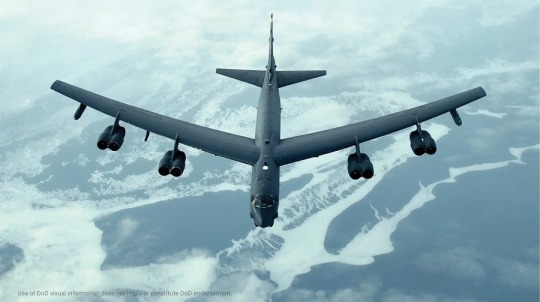
Updated B-52 electronic warfare suite will be tested in flight in 2024
Fernando Valduga By Fernando Valduga 03/29/2024 - 10:36 in Military
Flying through the skies since the 1950s, the B-52 Stratofortress is a U.S. Air Force (USAF) workhorse and a lasting symbol of American military power. The eight-engine giant has unique capabilities unparalleled to any other American warplane - which is why, after more than 70 years of service, it continues to play a vital role in the defense and national security strategy of the U.S. And thanks to a collaboration between L3Harris and USAF, this iconic aircraft is prepared to remain ready for the mission against highly sophisticated emerging threats in the coming decades.
Under a 10-year contract worth $947 million granted in 2021, L3Harris is upgrading and improving the AN/ALQ-172 electronic war self-protection system (EW), which protects the B-52 and air crews from a wide range of electronic threats. Our current work is based on decades of experience in providing critical technology as a Manufacturer of Original Equipment of the AN/ALQ-172 systems for the B-52 fleet. And combined with other ongoing modernization efforts, these updates will increase the relevance and reliability of the B-52 by the 2050s.

L3 Harris AN/ALQ-172 systems.
"Our opponents continue to evolve, facing advanced and far-reaching threats that challenge our ability to operate in contested environments," says Robert "Trip" Raymond, USAF's Program Leader for EW Technology Development at L3Harris. "It is essential that we provide our B-52 crew with the necessary tools to keep the B-52 relevant, lethal and survivable as the backbone of the strategic bomber force of the United States."
The effort of modernization and support - ALQ-172 Maintenance and Reliability System (MARS) - intends to do exactly that, increasing the average time between failures due to its modular design, while further improving the performance, maintenance capacity and reliability of the system. Thanks to an integrated and improved radio frequency system, crews will be able to simultaneously combat multiple radar threats that interfere with aircraft operations. And by replacing analog systems with more economical software solutions, USAF will be able to reduce the size of B-52 crews from 5 to 4. This frees up resources for additional mission-critical activities.
Ultimately, the updates will further help USAF in its Global Attack Mission and strengthen the effectiveness of the B-52 in modern warfare, while making future upgrades cheaper and easier.
"We are implementing affordable solutions that not only reduce costs, but also provide crews with more advanced protection against the most sophisticated threats detected by radar," said Jimmy Mercado, Program Director at L3Harris. "All this results in a more modern, efficient and effective aircraft, ready to dominate the future struggle."
USAF plans to conduct a test flight with the new electronic warfare capabilities of the B-52 in 2024.
Tags: Military AviationBoeing B-52H StratofortressEW - ELECTRONIC WARL3HarrisUSAF - United States Air Force / U.S. Air Force
Sharing
tweet
Fernando Valduga
Fernando Valduga
Aviation photographer and pilot since 1992, he has participated in several events and air operations, such as Cruzex, AirVenture, Dayton Airshow and FIDAE. He has works published in specialized aviation magazines in Brazil and abroad. He uses Canon equipment during his photographic work in the world of aviation.
Related news
AERONAUTICAL ACCIDENTS
VIDEO: Russian Su-27 fighter in flames falls into the sea near Sevastopol
29/03/2024 - 09:43
An F-16 fighter from the Norwegian air force lands at a Turkish air base in the Turkish city of Konya, in Central Anatolia. Norway, a member of NATO, will donate F-16 fighters to Ukraine, whose forces are involved in a difficult counter-offensive against Russia. (Photo: AP / Burhan Ozbilici)
MILITARY
Putin threatens to attack NATO air bases that host Ukrainian F-16 fighters
28/03/2024 - 21:56
MILITARY
Retirement from F-22 in 2030 is unlikely, since USAF intends to spend $7.8 billion on it before that
28/03/2024 - 21:16
MILITARY
IMAGES: Inaugural flight of the first light combat aircraft Tejas Mk 1A
28/03/2024 - 18:27
Dassault Rafale Fighter. (Photo: Katsuhiko Tokunaga)
MILITARY
France tests Thales' IRST system update for Rafale F4.2 update
28/03/2024 - 15:00
MILITARY
Dutch drone fleet MQ-9A Reaper will receive tactical updates
28/03/2024 - 14:00
36 notes
·
View notes
Text

#military#aircraft#air force#us air force#usaf#aviation#plane#jet#fighter plane#fighter jet#p 51 mustang#p51mustang#f 14 tomcat#f14#second world war#world war ii#cold war
204 notes
·
View notes
Text
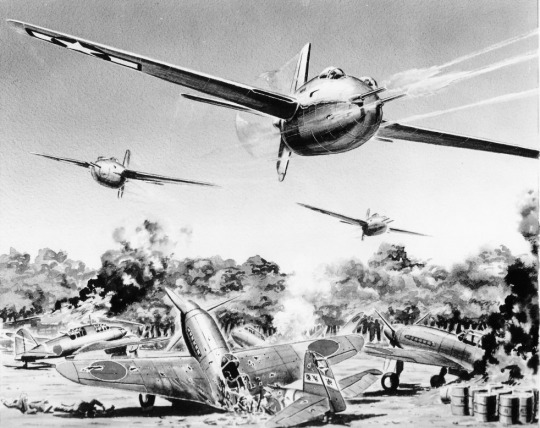
Concept art of Douglas B-42 Mixmaster attacking a Japanese airfield. This was the attack version which replaced the bombardier position with machine guns.
"The remarkable XB-42 was in many ways the most advanced piston-engined warplane ever flown. As René J. Francillon put it, 'the XB-42 was as fast as the Mosquito B.XVI but carried twice the maximum bomb load…furthermore the Mixmaster had a defensive armament of four 0.50-in machine-guns in two remotely-controlled turrets whereas the Mosquito B.XVI was unarmed.' A variety of offensive gun options were considered including sixteen .50 cals or two 37-mm cannons. The XB-42A had a top speed of 488 mph and a maximum range of 4,750 miles."
source
#Douglas XB-42 Mixmaster#Douglas XB-42#XB-42 Mixmaster#XB-42#B-42#Mixmaster#Bomber#Cancelled#United States Air Force#U.S. Air Force#US Air Force#USAF#World War II#World War 2#WWII#WW2#WWII History#History#Military History#1940s#my post
45 notes
·
View notes
Note
Aight, here’s what I’m tossing out!:
Top 5 aircraft you feel are underrated and get hated/made fun of too often?
Hmmmmmmmm that's an interesting criteria, because it's like- what do I judge on? Perceived performance? Popular perception?
I'm gonna go off of vibes here, and explain my choices:
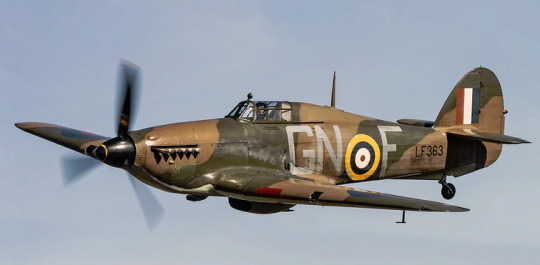
The Hawker Hurricane. When people think of the Battle of Britain in WWII, they think of the Supermarine Spitfire, because people are wrong and dumb. The Hurricane did the heavy lifting throughout much of the early war on the whole "keep the Nazis out of the skies over the UK" thing, and they served admirably for most of the war in many countries' service. Reliable, rugged, and tough, it's a damn fine plane that usually ends up being forgotten for its prettier, moodier cousin.
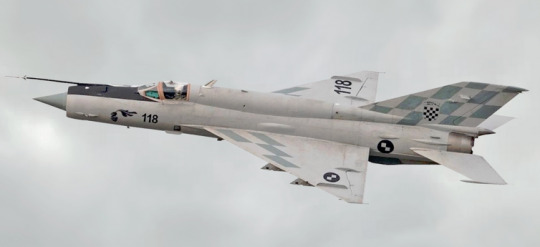
2. The MiG-21, though I could really point to a lot of soviet aviation. The "Balalaika" as it was nicknamed, was an absolute barnstormer in its time, a high-performance interceptor that scared the hell out of western planners over Vietnam and Egypt. Well-armed, maneuverable at speed, and fast as hell, it gave a lot of air forces real bloody noses, but it tends to be forgotten or relegated to the dustbin by popular culture for- get this- being outdated in the modern age. No shit. Things get old. Doesn't erase what they did before. Life's not a video game.
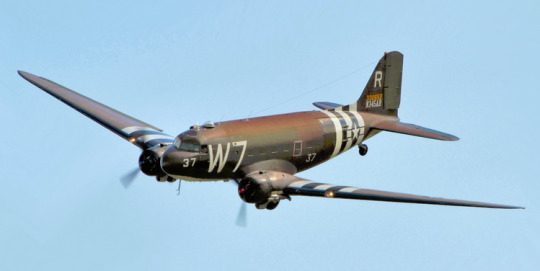
3. The C-47 Skytrain. Usually set dressing and nothing more, or overlooked by aviation nerds because it's "not one of the shooty planes," the C-47 is nothing short of the origin of modern commercial aviation. It was the first viable passenger plane in airline service, it was a cargo hauler all over the world, it fought through WWII (on both sides, copied both by the Soviets and Japanese,) and for many many years after. Some C-47s are still flying today, and that's a hell of a legacy.

4. The F-5 Tiger II. This one is less popular perception, and more being underrated in the real world- The Tiger II was a light fighter developed in the 1960's originally to be sold to the US Air Force, but which never saw full introduction in an era where small, light, maneuverable planes were losing out to big, unwieldy missile boats. Relegated to being sold as export or used as trainers, the F-5 was perhaps best appreciated by the Soviets, who were FLOORED by the maneuverability and handling of captured examples out of Vietnam. It's an aircraft denied its time in the limelight, despite being a damn fine little bird.
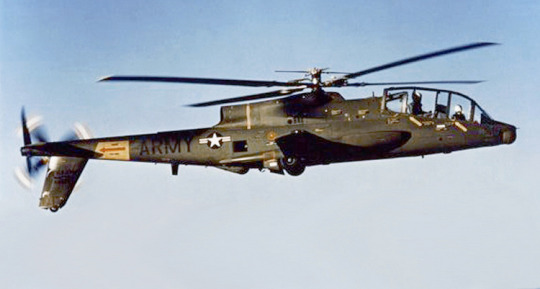
5. The AH-56 Cheyenne. That's right, a helicopter.
The Cheyenne was an attack helicopter being developed for the US Army during the cold war and was an incredibly advanced aircraft for its time, boasting features and improvements we only now see coming into common use with modern attack helicopters. It would have been fast, maneuverable, modern, and fantastic- but it made the USAF butt-hurt because military services are a bunch of whiny babies who throw temper tantrums if the other services get shiny toys that they think step on their toes. That's right, the Cheyenne wasn't cancelled because it was a failure- it was cancelled because the military-industrial complex is fucking stupid and deserves your scorn.
11 notes
·
View notes
Note
I have a really dumb question, but I’m assuming you know the answer: what’s the difference between top speed and cruising speed on a plane?
Not a dumb question at all! An aircraft’s top speed is, of course, the maximum airspeed it can achieve. Maximum speed is not maintained for long periods of time due to the fact that it can destroy the engine, it wastes fuel, or can otherwise cause wear and tear on the airframe as a whole. Cruise speed, on the other hand, is the average speed it travels for maximum efficiency and generally for safety. This is a general rule for commercial, recreational, and military aircraft as far as I’m aware. These speeds can also change with the aircraft’s altitude or whether they are ‘feet wet’ (over water) or ‘feet dry’ (over land). (E.g., The USAF F-16C/D has a maximum speed of ~1,350 mph (~2,173 kmh) but a cruising speed closer to 575-600 mph (most likely; the actual number is unknown, though an earlier variant, the F-16A, is listed to cruise at 577 mph.))
Another quirk of (specifically American) fighter jets* is the setting known as “WEP,” or war emergency power. (*Many modern air forces who also have domestic aero programs make jets with a similar setting, though it goes by different names). WEP started with WWII-era American piston-pusher propellor fighters. Designed to only be used in emergencies, it is a throttle setting that forces the aircraft’s engine to produce more than 100% of its rated power for (in US craft) up to five minutes. It is a throttle setting most often barred behind a physical lock that a pilot must break to access. (In the P-51D, there was a hard wire that would stop your throttle joystick from being moved forward; if slammed ball to the wall, it would snap the wire and force the engine into WEP.) WEP can absolutely destroy and melt an engine, and if not destroy it, it often damages it to a level that means it will need repairs if it’s lucky enough to get back home.
WEP gives a (jet) fighter pilot extra thrust in the engine, which will affect their performance, and as mentioned above, it is for emergencies. Usually in a dogfight, but might be accessed for evasive countermeasures/countermaneuvers when under scrutiny of a missile or other kinetic projectile. Over the years, most other militaries have developed a similar WEP feature, with a notable example being the Soviet VVS seen in the MiG-21bis. Designed to compete with the brand new and far more advanced F-16/F/A-18, the MiG-21bis was fitted with a brand new engine that could allow for two minutes of WEP that actually gave it a near-match in terms of performance! However, a consequence was that the engine might be unserviceable upon landing and cooldown due to lower quality materials.
14 notes
·
View notes
Text
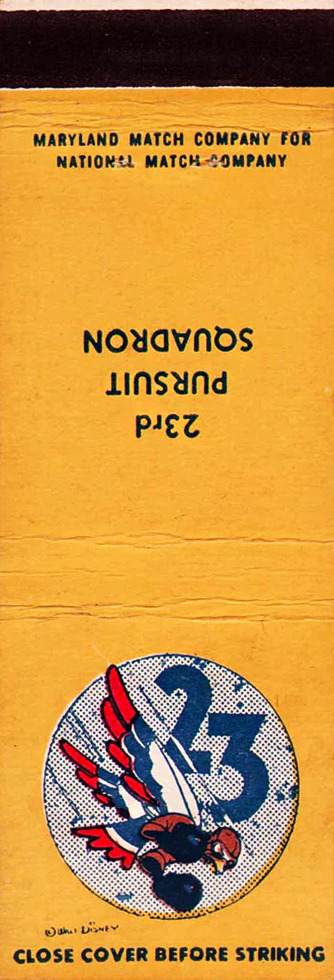
World War 2 era United States Army Air Forces’ 23rd Pursuit Squadron matchbook cover.
#vintage illustration#vintage advertising#matchbooks#vintage matchbooks#matchbook covers#u.s. military#walt disney#23rd pursuit squadron#23rd pursuit group#world war 2#ww2 history#wwii#ww2#ww2 art#wwii history#wwii era#united states army air forces#23rd fg#23rd fighter group#usaf#united state air force#23rd wing
9 notes
·
View notes